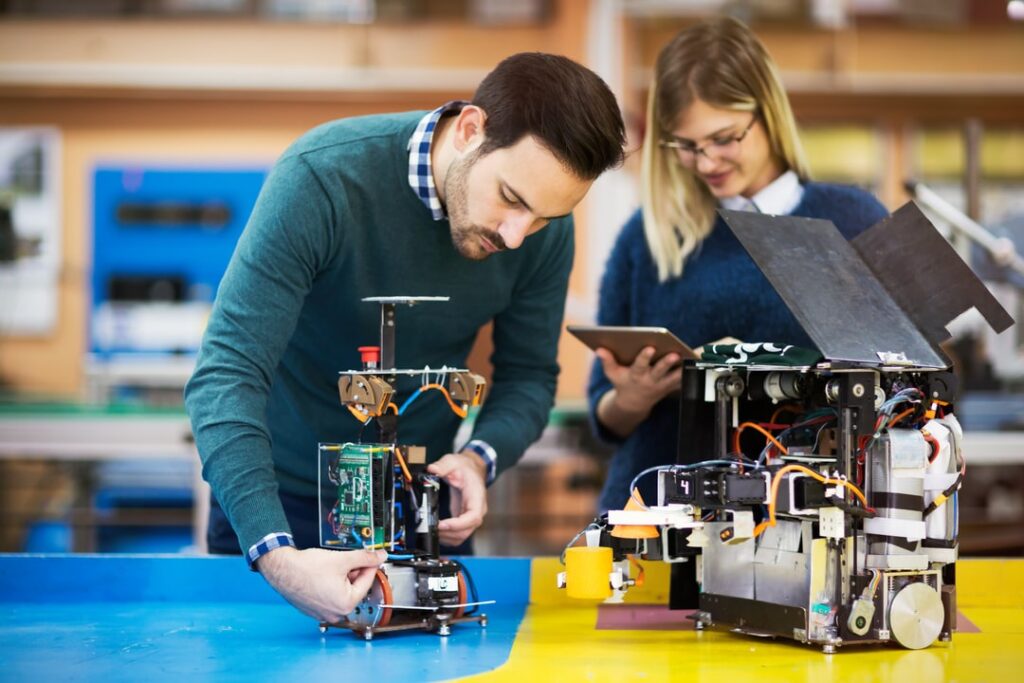In a world driven by accuracy, efficiency, and digital transformation, industrial CNC machining stands as the backbone of modern manufacturing. Whether you’re a seasoned fabricator or a tech-curious beginner, mastering this complex yet rewarding field is no longer optional—it’s essential.
Why? Because it’s not just about machines. It’s about unlocking the future of precision manufacturing.
Let’s dive headfirst into the world of industrial CNC machining with a step-by-step guide that’s been tailored not just for search engines—but for you, a real human, a future master, and dare we say, a friend.
The Evolution of Industrial CNC Machining
Before you can master it, you must understand it.
From Hand-Crafted to Digitally Controlled
There was a time when machining was all elbow grease and intuition. Today, industrial CNC machining transforms human design into mechanical perfection—repeating that perfection hundreds or thousands of times with zero deviation. CNC stands for Computer Numerical Control, and it’s that ‘numerical’ part that drives everything. Through software and code, we command tools that cut, shape, mill, and drill with a precision no human hand could ever achieve.
The Rise of Smart Manufacturing
Industries across aerospace, automotive, defense, and even medical devices rely on industrial CNC machining to push the boundaries of innovation. Smart factories are no longer science fiction. They’re data-driven powerhouses, where AI meets machinery, and manufacturing becomes predictive, not reactive.
Why Industrial CNC Machining Is the Heartbeat of Modern Manufacturing
It’s more than just a machine shop buzzword—it’s an ecosystem of speed, scale, and sophistication.
Unparalleled Precision at Scale
Imagine cutting a titanium component to within one-thousandth of an inch—now imagine doing it again and again with zero error. That’s the everyday power of industrial CNC machining. Whether you’re working with metals, plastics, or composites, CNC ensures accuracy at scale without sacrificing speed.
Lower Costs, Higher Returns
Sure, the machines aren’t cheap. But the ROI? Astronomical. Fewer errors mean fewer scrapped parts. Shorter production times mean faster time-to-market. And automation reduces reliance on manual labor, reallocating talent to higher-value tasks.
Mastering the Core Steps of Industrial CNC Machining
To become a true master, you need a blueprint.
Step 1: Designing the Blueprint (CAD)
It all begins in CAD—Computer-Aided Design. Here, digital models are crafted to perfection. This is where vision meets dimension. Designers lay the foundation, mapping out everything from geometry to tolerances. The stronger the design, the more accurate the final product.
Step 2: Converting to Code (CAM)
The CAD file is handed off to CAM—Computer-Aided Manufacturing. Think of this as translating human intention into machine language. G-code is generated here, the universal tongue of industrial CNC machining, telling each axis exactly where to go and what to do.
Tools of the Trade in Industrial CNC Machining
Not all CNC machines are created equal—so what’s in your toolbox?
Milling Machines, Lathes, and Routers
From multi-axis milling machines to Swiss-type lathes and 5-axis routers, the landscape of industrial CNC machining is incredibly diverse. Each tool serves a specific function: cutting, drilling, turning, or grinding. Knowing which tool for which job is a key skill for any aspiring CNC craftsman.
Software Ecosystems and Digital Twins
Modern industrial CNC machining goes beyond hardware. Digital twins and real-time analytics allow you to simulate, monitor, and optimize operations before a single chip is cut. This digital overlay isn’t just fancy—it’s functional.
Real-Life Impact: How One Small Factory Changed Everything
Let’s meet Jorge, a 42-year-old factory owner in Ohio. Two years ago, his machine shop relied on old-school lathes. Today, after integrating industrial CNC machining, his business scaled by 300%.
He says:
“Once we brought in CNC, not only did production triple, but our margins exploded. We could bid on contracts we only dreamed about before.”
His story isn’t unique. In fact, it’s becoming the new normal.
Challenges You Must Master in Industrial CNC Machining
Mastery doesn’t come without obstacles. But knowing them puts you ahead.
Complexity of Programming and Setup
Programming a 5-axis CNC machine isn’t a cakewalk. A single decimal error can ruin an entire batch. That’s why mastering industrial CNC machining requires ongoing training and precision. Many machinists undergo certification programs that align with industry standards like NIMS.
Material Limitations and Tool Wear
Not every material is CNC-friendly. And tools, no matter how strong, wear out. Understanding tool paths, feed rates, and cooling techniques is essential to avoid costly downtimes or failed runs.
Where to Learn More About Industrial CNC Machining
Education and training are non-negotiable in this game.
Online Courses, Trade Schools, and Apprenticeships
Whether you’re learning through Autodesk University or hands-on at a local trade school, there are endless paths to mastering industrial CNC machining. Apprenticeships also give you real-time exposure—a fast-track route to expertise.
Industry Events and Knowledge Hubs
Attend trade shows like IMTS or follow publications like Modern Machine Shop. These are treasure troves of insight. They’re also amazing places to connect with others who are just as passionate about industrial CNC machining as you are.
The Future of Industrial CNC Machining Is Already Here
The future isn’t waiting. It’s machining itself into existence.
AI Integration and Predictive Maintenance
AI-driven CNC machines can now self-correct mid-operation, monitor tool wear, and even recommend part optimizations. The future of industrial CNC machining is autonomous, adaptive, and astonishingly efficient.
Sustainable Machining and Smart Factories
Green machining isn’t a buzzword—it’s a business imperative. Efficient cooling systems, recyclable materials, and energy-conscious programming are all part of the next-gen CNC playbook. It’s time to align production with the planet.
Conclusion: From Curiosity to Mastery
Mastering industrial CNC machining isn’t just about operating machines—it’s about commanding innovation. It’s about understanding design, data, software, and systems. Whether you’re dreaming of launching your own shop or optimizing a global factory, this is your calling.
So—are you ready to get your hands on the control panel of the future?
Let’s make chips fly, shall we?
FAQS
What is CNC machining?
CNC machining is a manufacturing process where computer-controlled machines are used to carve out precise shapes from raw materials.
Why is mastering industrial CNC machining important?
Mastering industrial CNC machining allows for increased efficiency, accuracy, and consistency in the manufacturing process.
What are the basic steps involved in CNC machining?
The basic steps include design, programming, setup, machining, and inspection.
What materials can be used in industrial CNC machining?
Metals, plastics, wood, and composites are some of the materials commonly used in industrial CNC machining.
How can I learn industrial CNC machining?
You can take courses, attend workshops, or learn through online tutorials to master industrial CNC machining.







